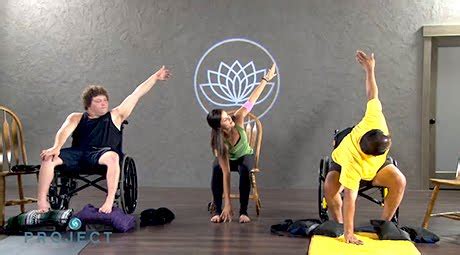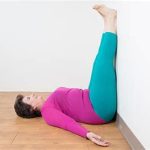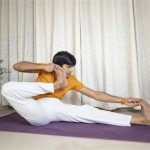Inclusive Yoga for Physical Disabilities: A Comprehensive Guide to Getting Started
Yoga, often associated with flexibility and complex poses, can be adapted to suit the needs of individuals with physical disabilities. This article explores how individuals with various disabilities can benefit from and start their yoga journey in an accessible and customized way. From the historical evolution of adaptive yoga to modern approaches, case studies, and practical guidelines, we will provide a thorough analysis of the topic.
Introduction
Yoga is renowned for its ability to enhance physical and mental well-being. For individuals with physical disabilities, however, traditional yoga practices may seem inaccessible or out of reach. This article seeks to bridge that gap by explaining how yoga can be modified to accommodate diverse physical needs. We will explore the adaptations, benefits, and challenges involved in practicing yoga with physical disabilities, offering practical advice for individuals and professionals looking to create inclusive environments.
Key Concepts
- Adaptive Yoga: A form of yoga that modifies traditional poses and practices to suit individuals with disabilities.
- Chair Yoga: A yoga practice performed while seated or with the assistance of a chair, ideal for those with limited mobility.
- Props and Aids: Equipment such as straps, blocks, and cushions that help modify poses and provide support where needed.
- Mind-Body Connection: Yoga’s emphasis on uniting physical movements with mental awareness, promoting holistic well-being regardless of physical limitations.
Historical Context
Yoga has been practiced for over 5,000 years, but its evolution into a practice accessible to people with disabilities is a relatively recent phenomenon. In the mid-20th century, as yoga gained popularity in the West, pioneers such as B.K.S. Iyengar introduced the use of props to help students of all abilities achieve correct alignment. Later, individuals and organizations began focusing specifically on yoga for people with physical disabilities, leading to the rise of adaptive yoga studios and specialized teacher training programs.
Current State Analysis
Today, adaptive yoga is increasingly recognized as an effective means of promoting physical health, emotional well-being, and community inclusion for individuals with disabilities. Organizations such as Accessible Yoga and Yoga for the Special Child have played a pivotal role in making yoga accessible to all. However, there are still barriers, such as lack of awareness, insufficient teacher training, and limited accessibility in yoga studios.
| Barrier | Solution |
|---|---|
| Lack of Awareness | Promote adaptive yoga through community outreach and partnerships with disability organizations. |
| Insufficient Teacher Training | Expand specialized training programs for yoga instructors to better equip them in working with individuals with disabilities. |
| Limited Accessible Studios | Encourage yoga studios to invest in accessible spaces and props to accommodate a broader range of participants. |
Practical Applications
Yoga can be adapted to accommodate a wide variety of physical disabilities. Below are some practical examples of how individuals with specific disabilities can modify yoga practices to meet their needs:
- Spinal Cord Injury (SCI): Seated poses with the use of props can help engage core muscles, while pranayama (breathing exercises) can promote relaxation and lung capacity improvement.
- Amputation: Adaptive yoga includes the use of props and support from a teacher or partner to balance poses. Chair yoga is another viable option.
- Cerebral Palsy: Yoga for individuals with cerebral palsy often focuses on building flexibility, coordination, and balance through supported poses and mindful breathing.
- Muscular Dystrophy: Gentle, supported movements can help reduce stiffness and increase mobility.
- Multiple Sclerosis (MS): Yoga can be tailored to help with balance issues and muscle weakness, focusing on gentle stretching and relaxation techniques.
Case Studies
Here are a few examples where yoga has been successfully adapted for individuals with disabilities:
| Case | Disability | Outcome |
|---|---|---|
| John’s Journey | Spinal Cord Injury | Through chair yoga and pranayama, John improved his core strength and respiratory function, reducing chronic pain. |
| Sarah’s Success | Amputation | With the help of a trained adaptive yoga instructor, Sarah gained better balance and enhanced her mental well-being. |
| Mike’s Transformation | Cerebral Palsy | Using supported standing poses, Mike developed increased flexibility and motor coordination. |
Stakeholder Analysis
When considering the implementation of yoga programs for individuals with physical disabilities, it’s important to analyze the key stakeholders involved:
- Individuals with Disabilities: The primary beneficiaries of adaptive yoga programs.
- Yoga Instructors: They must receive specialized training in adaptive techniques to meet the needs of all students.
- Healthcare Providers: Doctors and therapists play a critical role in recommending yoga as a complementary therapy for patients with physical disabilities.
- Yoga Studios: Studios need to ensure their spaces and equipment are accessible to individuals with varying physical needs.
- Disability Advocates: Advocacy groups push for greater inclusion and awareness of adaptive yoga practices.
Implementation Guidelines
For yoga instructors and studios interested in offering classes for individuals with disabilities, here are some practical implementation guidelines:
- Invest in accessible spaces with ramps, wide doorways, and adjustable lighting to create a welcoming environment.
- Provide props such as chairs, straps, bolsters, and blocks to support a range of poses.
- Offer individualized modifications during classes to cater to different mobility levels and body types.
- Develop a curriculum that includes both physical poses (asanas) and breathing exercises (pranayama) to enhance overall well-being.
- Partner with healthcare professionals to ensure that the yoga program complements any existing therapy or treatment plans.
Ethical Considerations
Offering yoga to individuals with physical disabilities raises several important ethical considerations:
- Consent and Autonomy: Ensure that participants understand the limitations of their bodies and have the autonomy to refuse poses or movements that are uncomfortable.
- Inclusivity: Yoga instructors must avoid making assumptions about the abilities of individuals based on their disabilities.
- Safety: Prioritize safety by offering modifications that prevent injury and accommodate the individual’s physical limitations.
Limitations and Future Research
While adaptive yoga offers numerous benefits, there are limitations to consider:
- Some disabilities may limit the extent to which individuals can participate in certain yoga practices, particularly in group settings.
- The availability of trained instructors remains limited, which restricts access to adaptive yoga programs in some regions.
- More research is needed to quantify the long-term health benefits of adaptive yoga, particularly for specific conditions such as multiple sclerosis or muscular dystrophy.
Future research could focus on developing standardized protocols for adaptive yoga practices and studying their effects on both physical and mental health outcomes across various disabilities.
Expert Commentary
As an expert in the field, it’s clear that the practice of yoga for individuals with physical disabilities has the potential to transform not only their physical health but also their emotional and mental well-being. The key is to create an inclusive and supportive environment that recognizes the unique needs of each individual. By focusing on accessibility, teacher training, and community awareness, yoga can truly be a practice for everyone.








